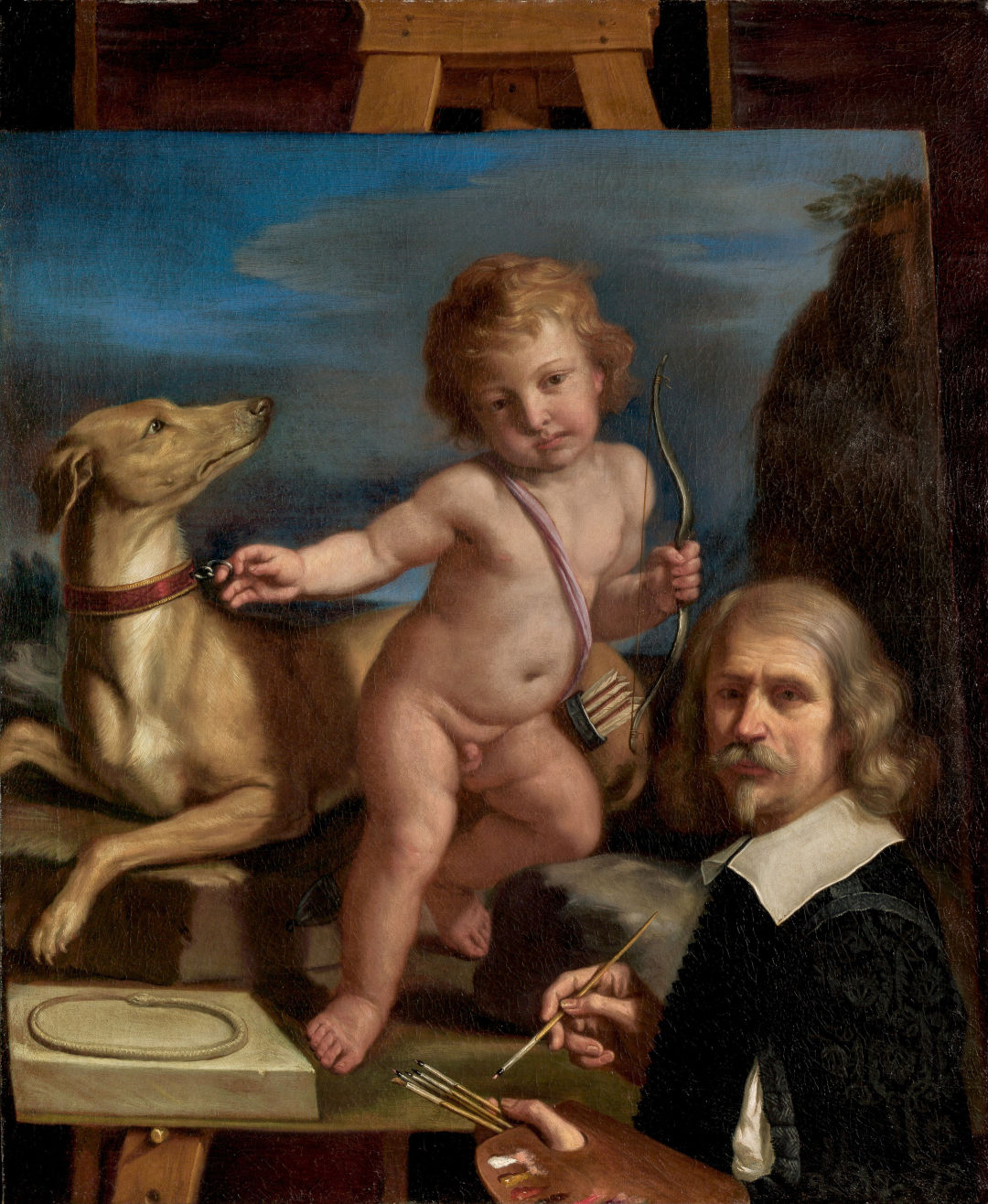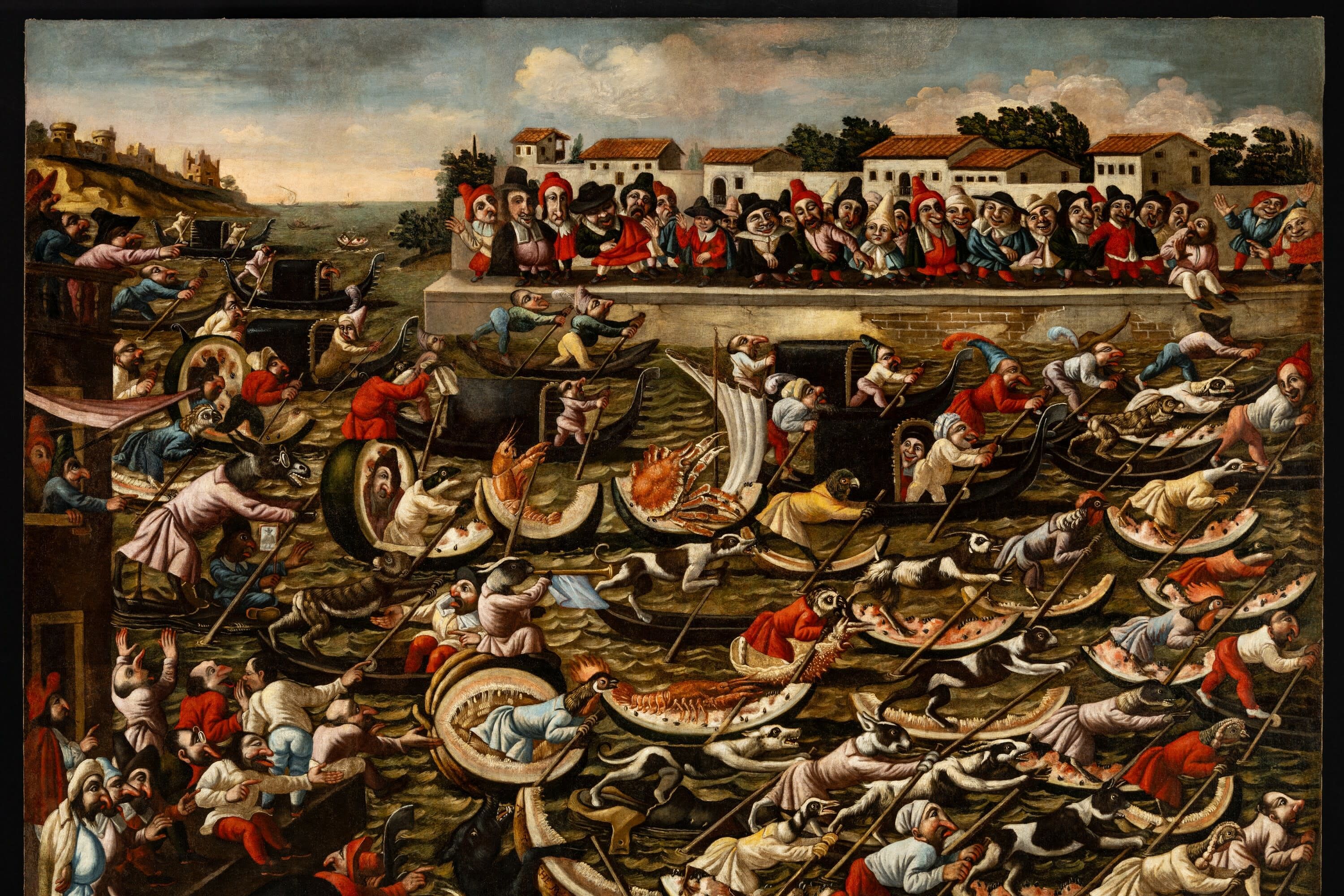Guercino's 'Friar with a Gold Earring' Presents Intriguing Mysteries at The Ringling

Guercino's Portrait of Fra Bonaventura Bisi, oil on canvas, Collection of The John and Mable Ringling Museum of Art.
Image: Courtesy of The Ringling
Question: What do Queen Christina of Sweden, Prince Leopoldo de Medici and a phenomenon dubbed “puttomania” have in common? Answer: a little-known friar, art dealer and miniaturist named Fra Bonaventura Bisi, who’s the subject of an exhibition that opened Saturday at The Ringling.
To be honest, those are just a few of the connections explored in the exhibit, Friar with a Gold Earring, which centers on a portrait of Bisi painted by Giovanni Francesco Barbieri (better known as Il Guercino) circa 1658-59. The painting was acquired by The Ringling at auction in 2015, and since then co-curator Dr. David M. Stone has been working with Ringling curators (currently with curator of collections Sarah Cartwright) to put together this show, which will run through Jan. 7, 2024.
So, as you stroll through the galleries viewing the related works on display and perusing the informational labels beside them, you will also discover how the tired-looking Bisi wearing (most unusually for a Franciscan friar renouncing worldly goods) that small golden hoop in one ear also bore ties to a talented female artist, rare for her time (Elisabetta Sirani, who died under mysterious circumstances), and pieces by Raphael, Parmigianino, Guido Reni and other masters. Bisi created painstaking miniatures of their larger creations, using a “dot” technique we might consider pointillism long before Georges Seurat ever coined that term.

Guercino, Self-Portrait before a Painting of "Amor Fedele," 1655, oil on canvas, National Gallery of Art, Washington, Patrons' Permanent Fund
Image: Courtesy of The Ringling
There’s much more to learn in this exhibit. You can marvel at how a whole wall in one gallery was transformed into a reproduction of a lengthy scroll that itself reproduced the series of carved reliefs depicting the Dacian Wars on Trajan’s Column in Rome. (The scroll is more than half the length of an NFL football field, BTW.) On a much smaller scale, you can peer closely at the Bisi miniatures on loan here; while much of his work is presumed lost, a handful of miniatures remain and give a viewer insight into his hand at work.
One work, Angel Appearing to St. Jerome, derives from a much larger painting by Guido Reni; as co-curator Stone says, “There’s something thrilling about seeing something so huge reduced to something you can hold in your hand,” like a refrigerator magnet.

Fra Bonaventura Bisi, Angel Appearing to St. Jerome, tempera on parchment, Galleria Estense, Modena, Italy
Image: Courtesy of The Ringling
There are references to, and works by, other artists of the period here, and a complementary exhibition in next-door galleries at The Ringling, 500 Years of Italian Drawings, on loan from the Princeton University Art Museum, carries on the journey.
Before closing, just referring back to our question at the beginning: “Puttomania” is how Stone describes the passion for paintings or drawings showing putti (cherubic, often naked, often winged male children). One example in the exhibit, Ballo di Putti, by the artist known as Pordenone, ignited a war of sorts between two would-be collectors, Queen Christina and that prince of the Medici clan, which put Bisi in the middle. It eventually ended up at the Uffizi in Florence, which has loaned it to The Ringling for this show.
Another tantalizing question: why the earring? Cartwright puts forward one theory in the exhibition’s catalogue, on sale in the museum’s gift shop. (Hint: It may be medical in nature.)
For more on the current exhibitions at The Ringling, visit ringling.org



